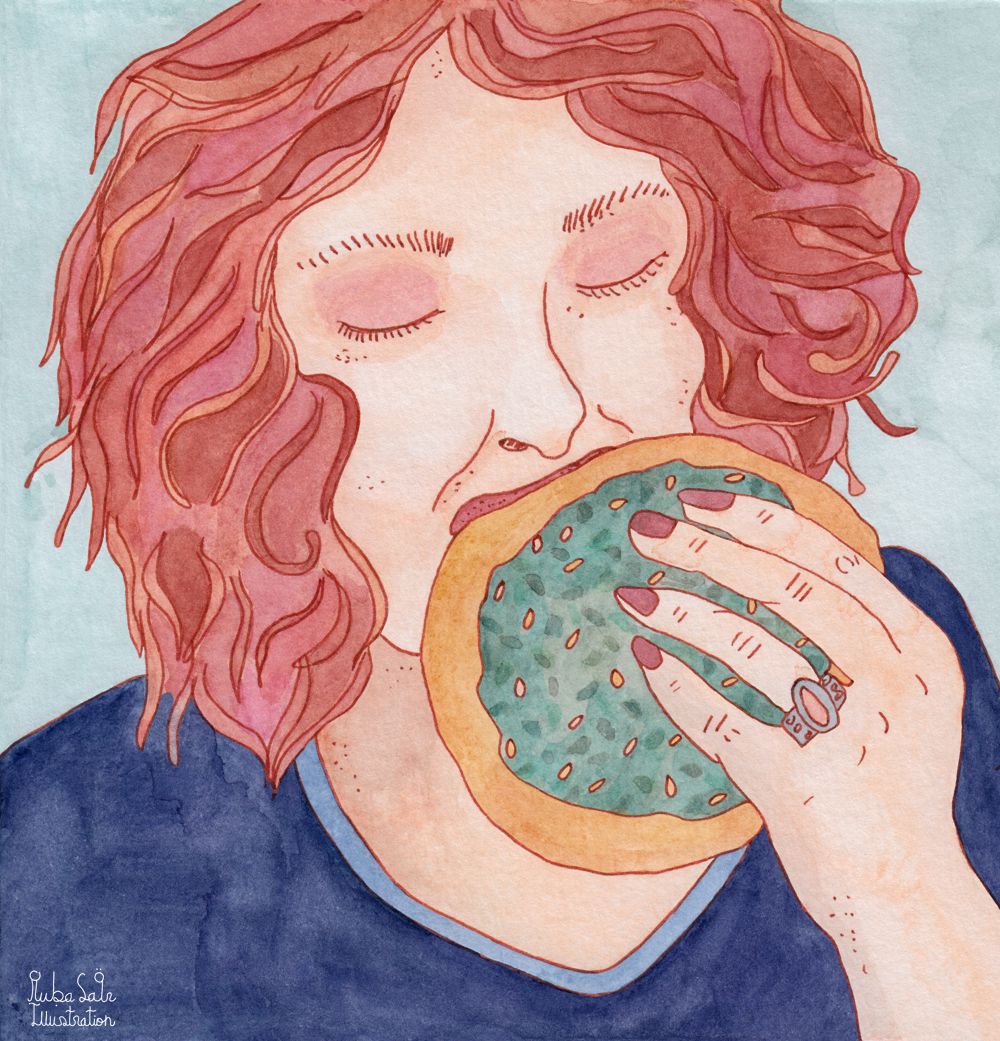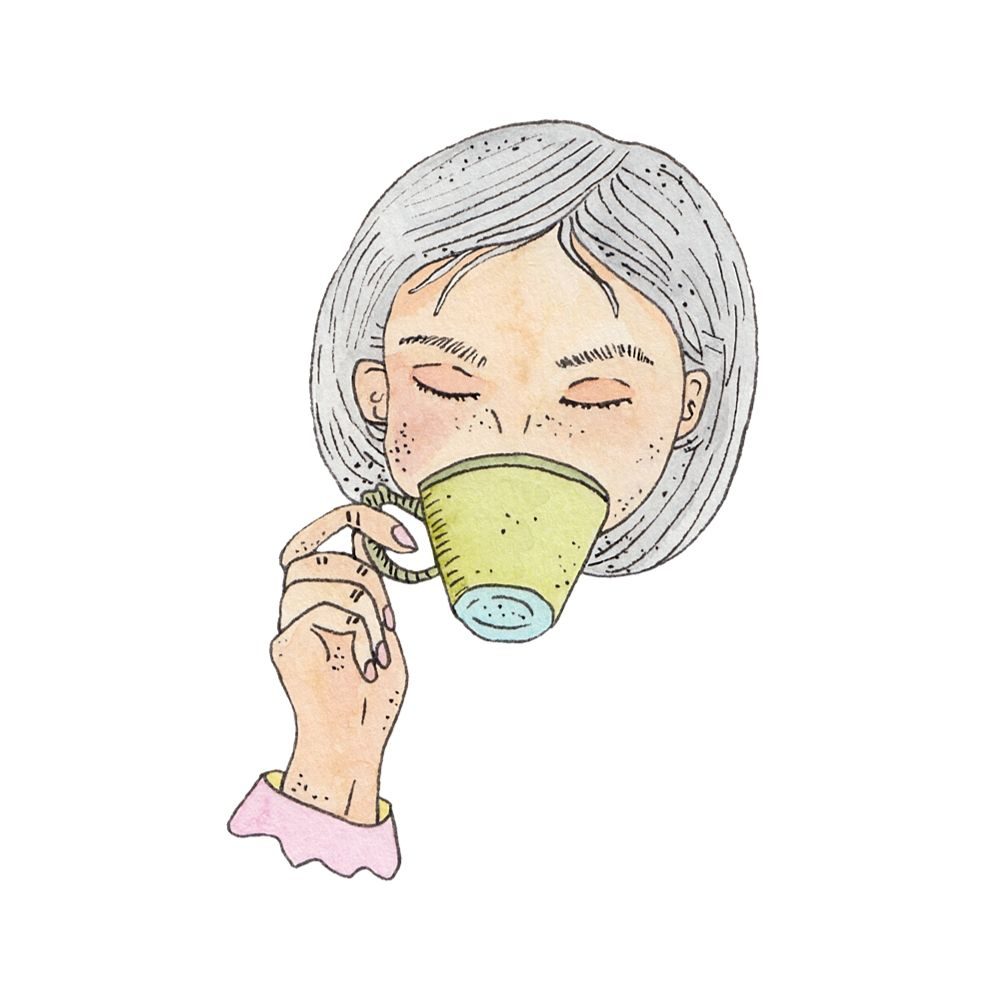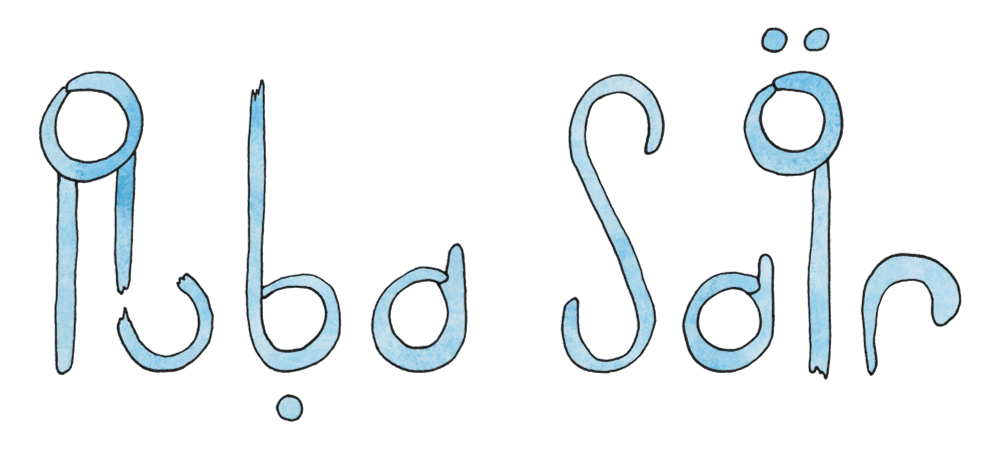Ink and watercolour: People illustration of woman eating Man’oushe
Creating an illustration of woman eating Man’oushe is an idea I’ve had for sometime now. It follows my desire to create more food and travel illustrations with a human element. What better way to celebrate the Levantine culture than by illustrating people eating Lebanese bakery food?

A taste of Man’oushe
My illustration of woman eating Man’oushe is meant to capture a moment in time, where a seemingly Middle Eastern woman is enjoying a bite of an iconic bakery offering.
Man’oushe, this scrumptious Lebanese flatbread, is popular across the whole Levant region, and beyond. Bakeries in Lebanon, Jordan, Syria, and Palestine have been making different variations of Manakish in recent decades.
Instead of Man’oushet Za’atar (which is the right way to say it in Arabic), the toppings vary from bakery to bakery. The classics include Akkawi cheese, or Jibneh Baida in Arabic, a famous white Arabic cheese made originally in the Palestinian city of Akka.
Other variations on the Man’oushe theme include baked eggs, Kishek (a traditional tangy powder made from a dehydrated mixture of fermented bulgur and yoghurt), pepper paste (Manakish Muhammara), and a mixture of Za’atar and Akkawi cheese.
This said, many bakeries these days have come up with innovative toppings that include Shish Tawook (Lebanese grilled chicken), among others. I’ve also seen smashed Falafel Man’oushe on some menus, a recipe that seems to have become popular on Pinterest.
In this 2018 article, associate editor of Guardian Culture, Tim Jonze, waxes poetic about his experience sampling “Manousheh” at The Lebanese Bakery in London. He mentions several newer variations, including sweet toppings like “strawberry, crushed pistachios and delicious halva” that the bakery offers on its menu.
Restaurants serving Lebanese or Middle Eastern food have also incorporated Manakish into their menus across the Arab world. That’s because dishes once served for breakfast are now being enjoyed for brunch, lunch, and sometimes even at dinnertime.
How food travelled across the Levant
Historically, people in the Levant used to travel freely between Lebanon, Syria, Palestine and Jordan, especially in Ottoman times. This made it easier for authentic ingredients (like Akkawi cheese) from different parts of the region to travel to other parts, yet retain a name that reminded us of their place of origin.
According to Beirut.com, the Hajj pilgrimage to Mecca – part of modern-day Saudi Arabia – was also a reason for food (including Man’oushe) to travel within and outside the Levant region. This is because the Muslim pilgrims sampled and bought local foods while on their months-long trek to reach their destination.

What is Man’oushe?
Man’oushe (also spelled Man’ousheh, Manousheh or Man’ouche) is the singular of Manakish (aka Manaqish or Manakeesh). These are all spelling variations in the English language, but the pronunciation is the same in all Arabic dialects. In fact, they all sound like the original pronunciation in the Lebanese dialect.
Man’oushe is a Lebanese flatbread with a Za’atar paste topping, made of a blend of dried and crushed thyme leaves, Sumac, toasted sesame seeds, salt and olive oil.
In 2023, the UNESCO added “Al-Man’ouché” to its List of Intangible Cultural Heritage and called it: “An emblematic culinary practice in Lebanon.”
The UN body’s site says: “The quintessential Lebanese breakfast, Al-Man’ouché is a flatbread prepared in homes and specialised bakeries, and enjoyed by people of all backgrounds.”
Early on, Zaatar w Zeit restaurant and NoGarlicNoOnions (a blog by Lebanese YouTuber Anthony Rahayel) launched an initiative in 2017 to mark November 2 as “World Lebanese Manoucheh Day.”
However, hands down, the best Za’atar blend you’ll ever try is from Jordan.
For generations, Jordanians have made their Za’atar blends with wild thyme. It just so happens that the soil in this Levantine country is rich with Basalt, a volcanic rock formed by the rapid cooling of lava that is rich with magnesium and iron. Because of these unique soil qualities, Jordanian thyme has a very strong and sharp flavour that makes it stand out.
About this illustration of woman eating Man’oushe
Enjoying Man’oushe with a cup of fresh mint soaked in black tea on a Friday morning, or at brunch, is heaven to many in the Levant and the Middle East.
I wanted to capture this indulgence in a food illustration that also had a human element. For a while now, I have been working on expanding my people illustration portfolio. I want to illustrate multicultural chefs and home cooks while cooking, eating, making tea or coffee, gardening or reading. And in the coming weeks, I hope to post more of these portrait illustrations.
The illustration mediums and art supplies I used for this editorial food illustration are all analogue or traditional. This is excluding the final touch ups I made in Affinity Photo 2 to clean up the artwork, in addition to the hand-lettering. I used a brown ink fineliner by Sakura Pigma Micron, a waterproof pigment ink pen, with watercolour from different brands. These include: St. Petersburg, Schmincke Horadam, and Winsor & Newton Cotman.
The paper is from the Canson XL series, a 300gsm cold pressed watercolour paper in A5. The brushes include different sizes of Series 7 Finest Kolinsky Sable Brushes by Winsor & Newton.






Leave a Reply